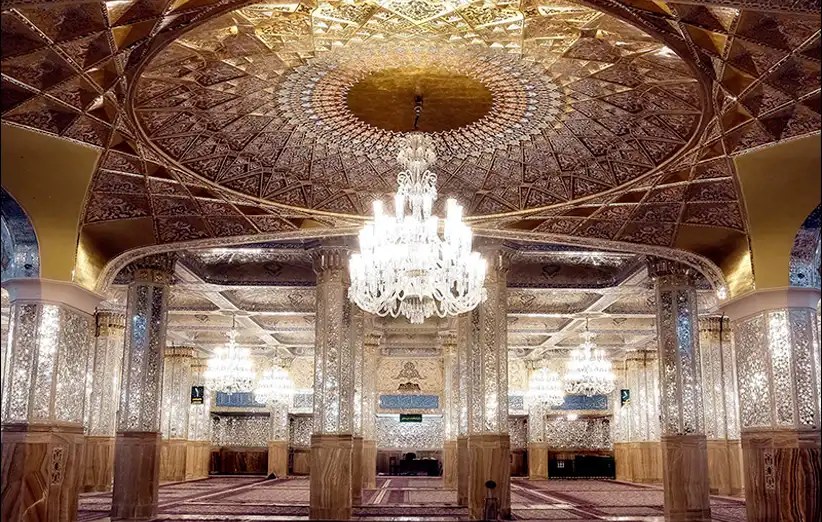
Introduction
Islamic art is a profound and multifaceted expression of cultural and spiritual values that has evolved over centuries. Its unique characteristics reflect the deep religious and philosophical tenets of Islam, distinguishing it from other artistic traditions. This article delves into the essence of Islamic art, exploring its historical development, philosophical underpinnings, and the distinctive features that define its identity. By examining these elements, we gain a deeper understanding of how Islamic art transcends mere decoration to embody spiritual and metaphysical truths.
Historical Context and Evolution
Islamic art emerged from a rich tapestry of cultural exchanges and religious influences. Following the advent of Islam in the 7th century, the Islamic empire expanded rapidly, incorporating diverse artistic traditions from conquered regions. The artistic practices of the Greeks, Byzantines, and Indian civilizations were encountered by early Muslims, yet the Islamic teachings introduced specific prohibitions that shaped the development of Islamic art.
One of the fundamental prohibitions in Islamic art is the depiction of divine figures and living beings. This prohibition stemmed from the Islamic belief in the transcendence and oneness of God, which made any form of representation of the divine or living creatures both inappropriate and inconceivable. Early Islamic artists, therefore, faced the challenge of creating art that adhered to these religious guidelines while still drawing inspiration from the rich artistic traditions they encountered.
Rather than abandoning artistic practices, Islamic artists innovated new forms of expression. They shifted focus from naturalistic representations to abstract and symbolic forms, incorporating intricate geometric patterns, calligraphy, and floral designs. This approach allowed them to adhere to religious prohibitions while creating visually stunning and spiritually resonant works.
Philosophical and Mystical Dimensions
Islamic art is deeply intertwined with Islamic philosophy and mysticism. For Muslim philosophers and mystics, art is not merely a form of visual expression but a means of accessing deeper spiritual truths. The essence of Islamic art is rooted in the mystical pursuit of divine knowledge and the reflection of spiritual realities.
The concept of transcending appearances to reach the essence of reality is central to Islamic thought. In the words of the Persian poet Sheikh Mahmoud Shabestari, as expressed in his work “Gulshan-e-Raz” (The Rose Garden of Mystery), the journey of thought involves moving from the illusion of multiplicity to the unity of divine reality. This perspective underscores the role of Islamic art in transcending the material world to reveal spiritual truths.
In this context, Islamic art becomes a means of experiencing and expressing divine unity and the spiritual order of the universe. The abstract patterns and symbolic designs found in Islamic art are not merely decorative but are imbued with deeper meanings and spiritual significance. They reflect the artist’s understanding of the divine and their attempt to communicate that understanding through visual forms.
Key Features and Techniques of Islamic Art
The key features of Islamic art are deeply rooted in its philosophical and religious context. The primary elements that characterize Islamic art include:
The Role of the Artist
In Islamic art, the role of the artist extends beyond mere creation. The artist is seen as a mediator between the material world and the divine realm. Through their work, artists strive to embody and communicate spiritual truths, reflecting their deep understanding of Islamic philosophy and mysticism.
Islamic artists are not only skilled craftsmen but also spiritually attuned individuals who seek to create works that resonate with divine qualities. The artistic process is viewed as a form of spiritual practice, where the artist’s intention and understanding play a crucial role in the creation of meaningful and spiritually enriching art.
Cultural and Global Impact
Islamic art has had a profound impact on global artistic traditions, influencing various cultures and artistic movements. The unique characteristics of Islamic art, including its abstract forms and symbolic representations, have inspired artists and designers around the world. The integration of Islamic artistic principles with local traditions has resulted in a rich and diverse array of artistic expressions.
Islamic art’s influence can be seen in various architectural, decorative, and artistic forms across different cultures. From the stunning mosques of Spain to the intricate tilework of Persia, the legacy of Islamic art continues to inspire and captivate audiences worldwide.
Conclusion
The essence of Islamic art lies in its ability to transcend mere decoration and embody deeper spiritual and metaphysical truths. Through its unique approach to representation, including geometric patterns, calligraphy, and abstract designs, Islamic art reflects the divine order and the unity of creation. The role of the artist in this tradition is to create works that resonate with spiritual significance and facilitate a deeper connection with the divine.
As a manifestation of Islamic philosophy and mysticism, Islamic art remains a powerful expression of cultural and spiritual identity. Its impact on global artistic traditions underscores the enduring relevance and beauty of this rich artistic heritage.
References